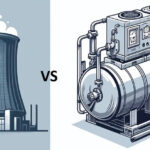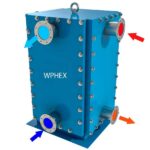Subsea pipelines are essential components of offshore oil and gas production, transporting oil and gas from wells to processing facilities onshore. These pipelines are subject to harsh subsea environments, high pressures, and corrosive fluids, which can result in leaks and failures if not designed and maintained correctly. Therefore, the design and integrity management of subsea pipelines are critical to ensuring safe and reliable operations.
Design Challenges
The design of subsea pipelines must take into account several factors unique to the subsea environment. Firstly, the pipelines must withstand high pressure and temperatures, as well as the corrosive effects of seawater and other subsea fluids. Additionally, they must be designed to handle external forces such as ocean currents, waves, and marine life. These factors often require the use of specialized materials and coatings, as well as careful attention to pipeline routing and installation.
One of the key design challenges of subsea pipelines is pipeline routing. The pipeline route must avoid obstacles such as rocks, shipwrecks, and underwater features such as canyons and cliffs. This requires extensive survey work to identify potential hazards, as well as the use of sophisticated computer models to determine the optimal pipeline route.
Another design challenge is the installation of subsea pipelines. Pipelines must be installed on the seabed using specialized equipment such as pipe-laying vessels, and the installation process can be impacted by weather conditions, underwater currents, and other environmental factors. Additionally, pipelines must be installed with sufficient depth of cover to protect them from damage by fishing activities, boat anchors, and other hazards.
Integrity Management Challenges
Once subsea pipelines are installed, ongoing integrity management is essential to prevent leaks and failures. The challenges of integrity management include corrosion, erosion, and damage caused by external forces such as storms and vessel anchors. Pipelines must be inspected regularly to detect signs of damage and corrosion, and repairs must be made promptly to prevent leaks and other failures.
Corrosion is a significant challenge for subsea pipelines, as the corrosive effects of seawater can rapidly degrade pipeline materials such as steel. To mitigate this, pipelines are often coated with specialized materials to prevent corrosion. Additionally, cathodic protection systems are used to protect the pipeline from corrosion by applying an electric current to the pipeline. This current causes the pipeline to become negatively charged, which inhibits the corrosive effects of seawater.
Erosion is another significant challenge for subsea pipelines, as the high velocity of fluids flowing through the pipeline can cause erosion and wear on pipeline materials. To mitigate this, pipelines are often designed with specialized coatings and materials that are resistant to erosion, as well as flow control devices that reduce the velocity of fluids flowing through the pipeline.
Innovations in Subsea Pipeline Design and Integrity Management
To address these challenges, several innovative technologies and approaches are being developed and deployed. One such innovation is the use of autonomous underwater vehicles (AUVs) for pipeline inspections. AUVs are unmanned underwater vehicles that can navigate autonomously and carry out inspections and surveys of subsea pipelines. They are equipped with sensors and cameras that can detect signs of corrosion, erosion, and other damage, allowing pipeline operators to identify potential problems before they become major issues.
Another innovation is the use of fiber-optic sensing technology for pipeline monitoring. Fiber-optic cables can be installed along the length of the pipeline, and sensors attached to the cable can detect changes in temperature, pressure, and strain. This allows pipeline operators to monitor the pipeline in real-time, detecting potential issues before they become critical.
Advanced coating materials are also being developed to provide greater protection against corrosion and erosion. For example, nano-coatings made from carbon nanotubes and other advanced materials can provide excellent resistance to corrosion and erosion, while also being lightweight
Useful applications
Check out Webbusterz Engineering applications on google play!











